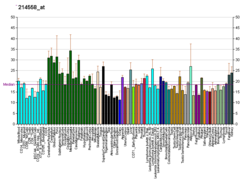| GPR12 | |||||||||||||||||||||||||||||||||||||||||||||||||||
|---|---|---|---|---|---|---|---|---|---|---|---|---|---|---|---|---|---|---|---|---|---|---|---|---|---|---|---|---|---|---|---|---|---|---|---|---|---|---|---|---|---|---|---|---|---|---|---|---|---|---|---|
| Identifiers | |||||||||||||||||||||||||||||||||||||||||||||||||||
| Aliases | GPR12 , GPCR12, GPCR21, PPP1R84, G protein-coupled receptor 12 | ||||||||||||||||||||||||||||||||||||||||||||||||||
| External IDs | OMIM: 600752; MGI: 101909; HomoloGene: 3868; GeneCards: GPR12; OMA:GPR12 - orthologs | ||||||||||||||||||||||||||||||||||||||||||||||||||
| |||||||||||||||||||||||||||||||||||||||||||||||||||
| |||||||||||||||||||||||||||||||||||||||||||||||||||
| |||||||||||||||||||||||||||||||||||||||||||||||||||
| |||||||||||||||||||||||||||||||||||||||||||||||||||
| |||||||||||||||||||||||||||||||||||||||||||||||||||
| Wikidata | |||||||||||||||||||||||||||||||||||||||||||||||||||
| |||||||||||||||||||||||||||||||||||||||||||||||||||
Probable G-protein coupled receptor 12 is a protein that in humans is encoded by the GPR12 gene. [5] [6] [7]
Contents
The gene product of GPR12 is an orphan receptor, meaning that its endogenous ligand is currently unknown. Gene disruption of GPR12 in mice results in dyslipidemia and obesity. [8]




